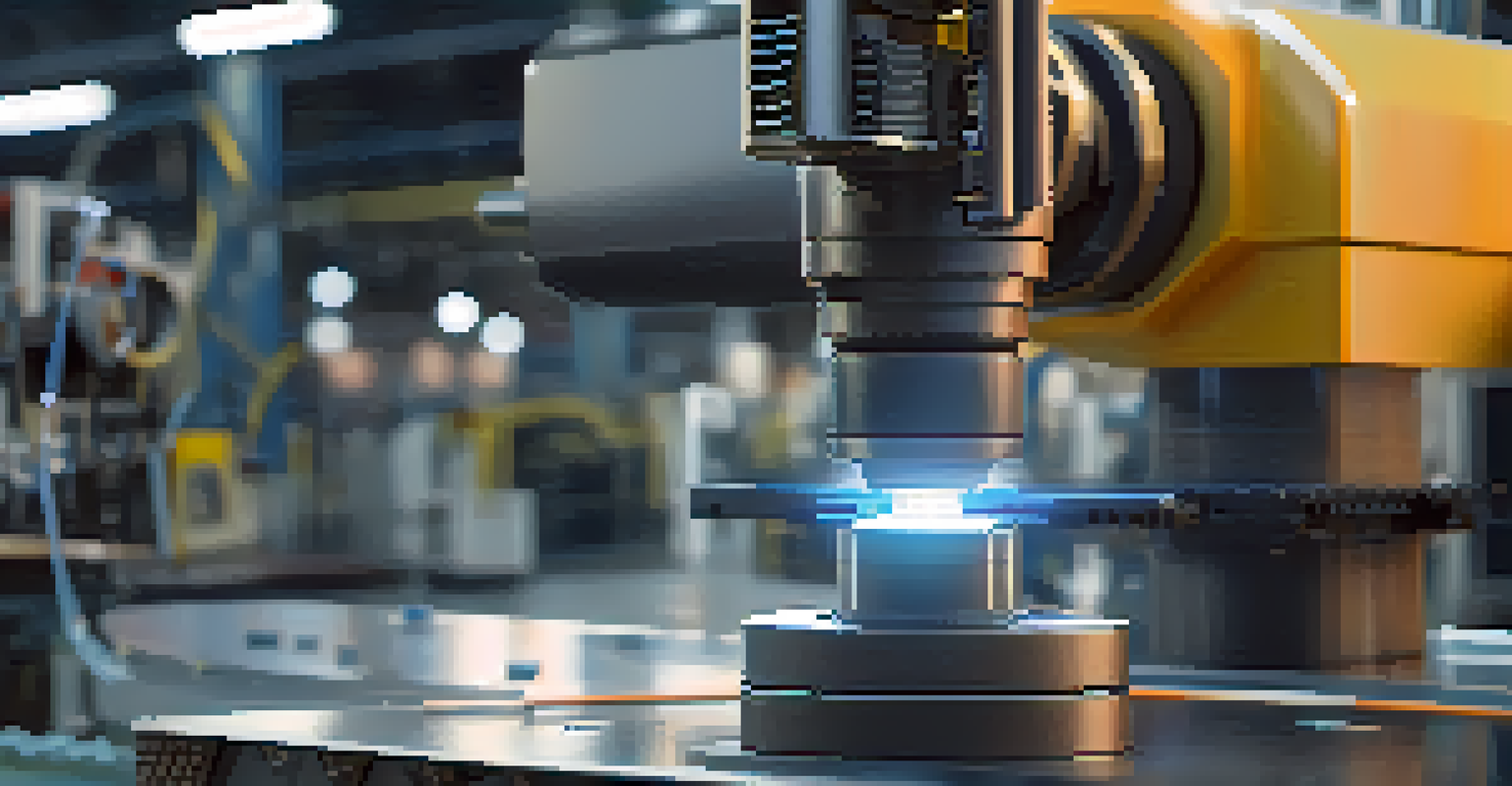Integrating AI with IoT for Enhanced Predictive Maintenance

Understanding AI and IoT: A Powerful Duo
Artificial Intelligence (AI) and the Internet of Things (IoT) are two transformative technologies. While AI mimics human intelligence to analyze data, IoT connects everyday devices to the internet, allowing them to share information. Together, they form a powerful duo that enhances predictive maintenance. This combination helps organizations foresee equipment failures before they occur, saving time and resources.
The greatest danger in times of turbulence is not the turbulence; it is to act with yesterday's logic.
Imagine a factory where machines communicate their health status in real-time. By analyzing this data with AI algorithms, businesses can predict when a machine is likely to fail. This proactive approach minimizes downtime and improves overall productivity.
In essence, the synergy between AI and IoT not only streamlines maintenance processes but also fosters a culture of innovation. Businesses that embrace these technologies can stay ahead of the competition by optimizing operations and reducing costs.
The Role of Predictive Maintenance in Industries
Predictive maintenance is more than just fixing things when they break; it's about anticipating issues before they disrupt operations. Industries like manufacturing, healthcare, and transportation greatly benefit from this approach. By leveraging AI and IoT, companies can transform maintenance from a reactive to a proactive strategy.

Take, for example, a shipping company that regularly monitors its fleet's engine performance. By using IoT sensors to collect data and AI to analyze it, they can predict when an engine might need servicing. This not only prevents costly breakdowns but also enhances the safety of operations.
AI and IoT Enhance Predictive Maintenance
The integration of AI and IoT allows businesses to predict equipment failures, improving productivity and reducing downtime.
Ultimately, predictive maintenance helps industries save money and improve efficiency. It turns maintenance into a strategic advantage, enabling organizations to focus on growth rather than being bogged down by unexpected repairs.
Key Benefits of Integrating AI with IoT for Maintenance
Integrating AI with IoT brings several key benefits to predictive maintenance. First and foremost, it enhances accuracy. AI algorithms analyze vast amounts of data from connected devices, identifying patterns that human operators might miss. This leads to more precise predictions about equipment health.
You can't manage what you can't measure.
Another significant advantage is cost savings. By addressing potential failures early, businesses can avoid expensive repairs and downtime. For instance, a manufacturing plant that leverages this integration can significantly reduce its maintenance budget by only servicing machines when truly necessary.
Moreover, this integration improves safety. Predictive maintenance helps identify hazardous conditions before they lead to accidents. Consequently, companies can create safer work environments while also fostering employee confidence in their operations.
Challenges in Implementing AI and IoT Solutions
While the benefits of integrating AI and IoT for predictive maintenance are clear, several challenges remain. One of the primary hurdles is the initial investment. Implementing advanced sensors and AI systems can be costly, particularly for small to medium-sized enterprises.
Data privacy and security are also significant concerns. With more devices connected to the internet, the risk of data breaches increases. Companies need to ensure robust security measures are in place to protect sensitive information.
Predictive Maintenance Saves Costs
By anticipating maintenance needs, companies can avoid costly repairs and optimize their maintenance budget.
Finally, the integration process itself can be complex. Organizations must ensure that their existing systems can communicate effectively with new IoT devices and AI solutions. This requires careful planning and often a cultural shift within the organization.
Real-World Examples of AI and IoT in Action
Numerous organizations have successfully integrated AI and IoT for predictive maintenance, showcasing its effectiveness. For instance, GE Aviation uses IoT sensors on jet engines to collect data on performance. Their AI algorithms analyze this data to predict when maintenance is needed, significantly reducing engine downtime.
Another example can be found in the automotive industry, where Tesla continuously monitors its vehicles' performance. The data collected allows them to provide over-the-air updates and predict maintenance needs, enhancing customer experience and vehicle reliability.
These real-world applications highlight the transformative potential of combining AI and IoT. They serve as inspiring examples for other industries looking to adopt similar strategies for predictive maintenance.
Future Trends in AI and IoT for Predictive Maintenance
As technology continues to evolve, the future of predictive maintenance using AI and IoT looks promising. One trend is the increased use of machine learning, a subset of AI that improves predictions over time. By learning from historical data, these systems will become even more accurate in forecasting maintenance needs.
Another trend is the rise of edge computing. This involves processing data closer to the source rather than sending it to a centralized server. This can lead to faster decision-making and reduced latency, crucial for real-time predictive maintenance applications.
Challenges in AI and IoT Adoption
Implementing AI and IoT technologies poses challenges such as high initial costs, data security concerns, and integration complexities.
Lastly, we can expect a greater emphasis on sustainability. Companies will increasingly leverage AI and IoT to optimize maintenance not just for efficiency, but also to minimize environmental impact. This holistic approach will help businesses adhere to regulatory standards while appealing to environmentally conscious consumers.
Getting Started with AI and IoT for Maintenance
Beginning your journey into integrating AI and IoT for predictive maintenance doesn't have to be overwhelming. Start by assessing your current maintenance practices and identifying areas for improvement. This will help you determine the specific goals you want to achieve with these technologies.
Next, invest in the right IoT sensors and data analytics tools that align with your objectives. It's important to choose solutions that integrate seamlessly with your existing systems. Additionally, ensure your team is adequately trained on these new technologies to maximize their effectiveness.

Finally, consider partnering with experts or consultants who specialize in AI and IoT. Their insights can guide you through the implementation process, helping you avoid common pitfalls while ensuring a smooth transition into a more proactive maintenance strategy.